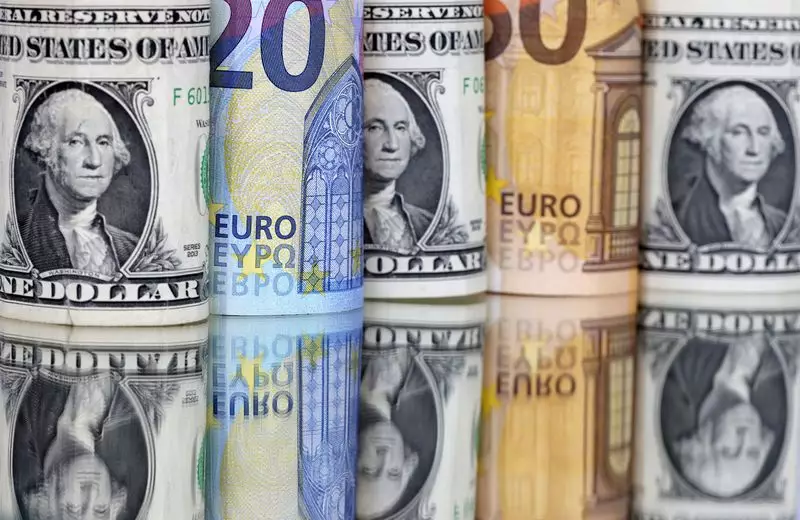As the financial markets open in 2025, the U.S. dollar has swiftly ascended to a two-year high, reflecting a robust confidence in the American economy. This surge is largely attributed to the strong performance of the U.S. economy relative to its global peers. The Federal Reserve’s relentless stance on maintaining higher interest rates amid persistent inflation above the targeted 2% reinforces the dollar’s appeal. The anticipation of continued economic growth under the new administration of President Donald Trump further amplifies these expectations, suggesting that the dollar will continue to reign supreme in the currency markets.
The influx of capital into the U.S. markets has been a significant driver of the dollar’s hike. Adam Button, a chief currency analyst, emphasized this shift, noting that the U.S. stock market has significantly outperformed other global markets. Investors are drawn to the stability and potential returns in the U.S. economy, with the dollar being favored as the predominant currency. As long as the American economy maintains its footing, particularly with the backdrop of a strong labor market—illustrated by a surprising decrease in jobless claims—this upward momentum in the dollar is likely to continue.
In contrast to the strengthening dollar, other major currencies have faltered. The euro, struggling under expectations of aggressive interest rate cuts from the European Central Bank, has hit lows not seen since late 2022. Traders are skeptical of the ECB’s ability to manage inflation effectively, highlighting a divergence in monetary policy that contributes to the euro’s decline against the dollar. Similarly, the British pound has shown vulnerability, breaking past support levels, reflecting broader concerns about the UK’s economic outlook amidst ongoing inflationary pressures.
The yen has faced its own set of challenges, moving closer to five-month lows and placing additional pressure on the Bank of Japan to consider interest rate hikes. However, uncertainty looms over the timing and magnitude of such adjustments. Meanwhile, the Chinese yuan is under significant stress as economic concerns mount, further compounded by potential import tariffs from the incoming U.S. administration. Investor sentiment regarding China continues to waver, recognizing the risks associated with its economic recovery.
Interestingly, while some currencies are losing ground, the Australian and New Zealand dollars are showcasing resilience, making notable recoveries from recent lows. This could indicate a potential shift in investor focus to emerging market currencies, sparking future interest in these economies. Additionally, the cryptocurrency market has felt the ripple effects of dollar strength but continues to exhibit its own volatility, with bitcoin inching upwards despite widespread market fluctuations.
The U.S. dollar’s rise in the early days of 2025 encapsulates broader economic trends and investor sentiments shaped by anticipated growth, ongoing inflation, and contrasting global economic environments. The landscape of foreign exchange remains precarious, as the dollar’s strength not only influences U.S. markets but also the economic trajectories of countries around the world.

